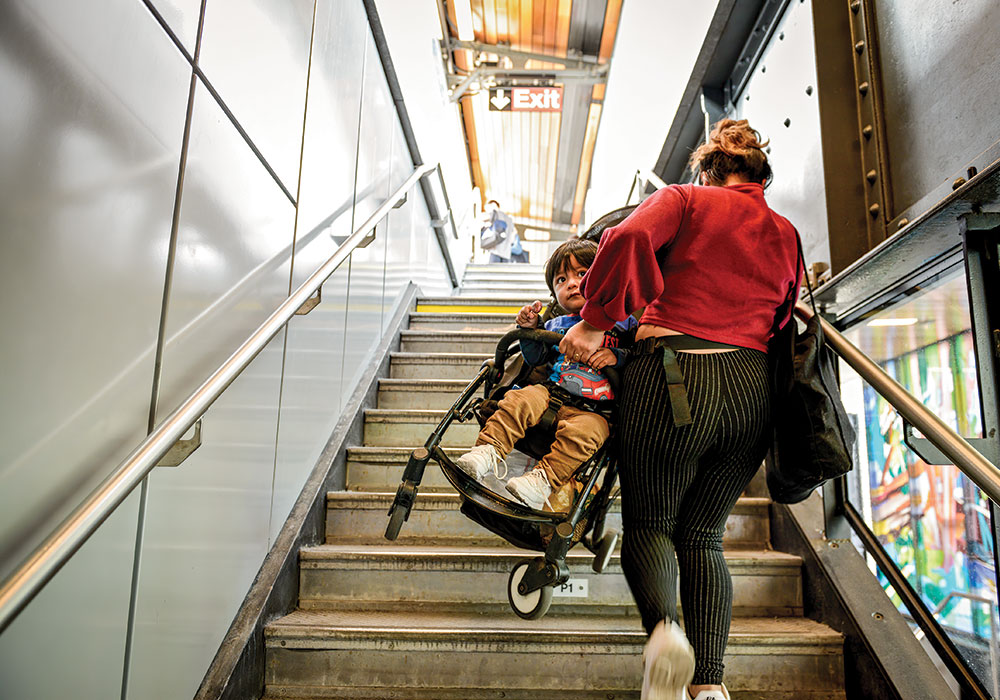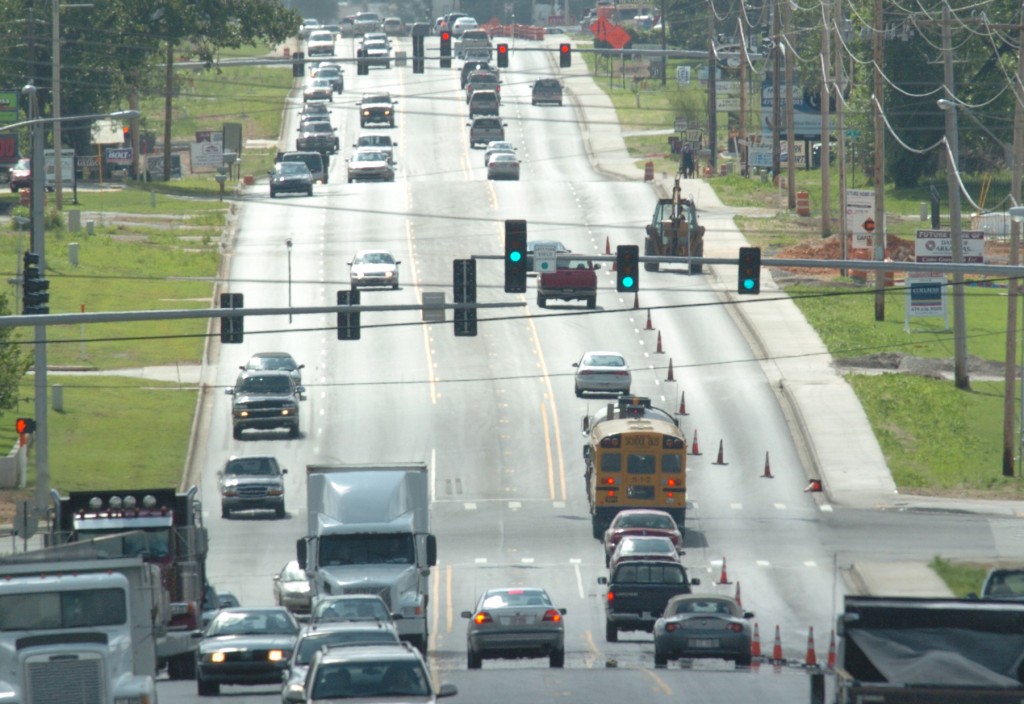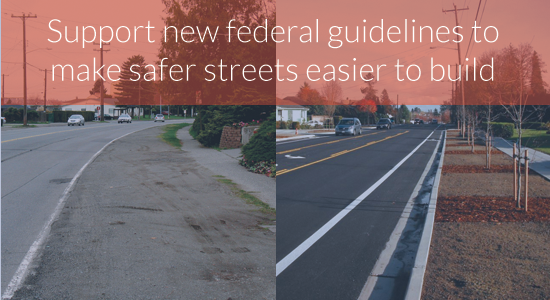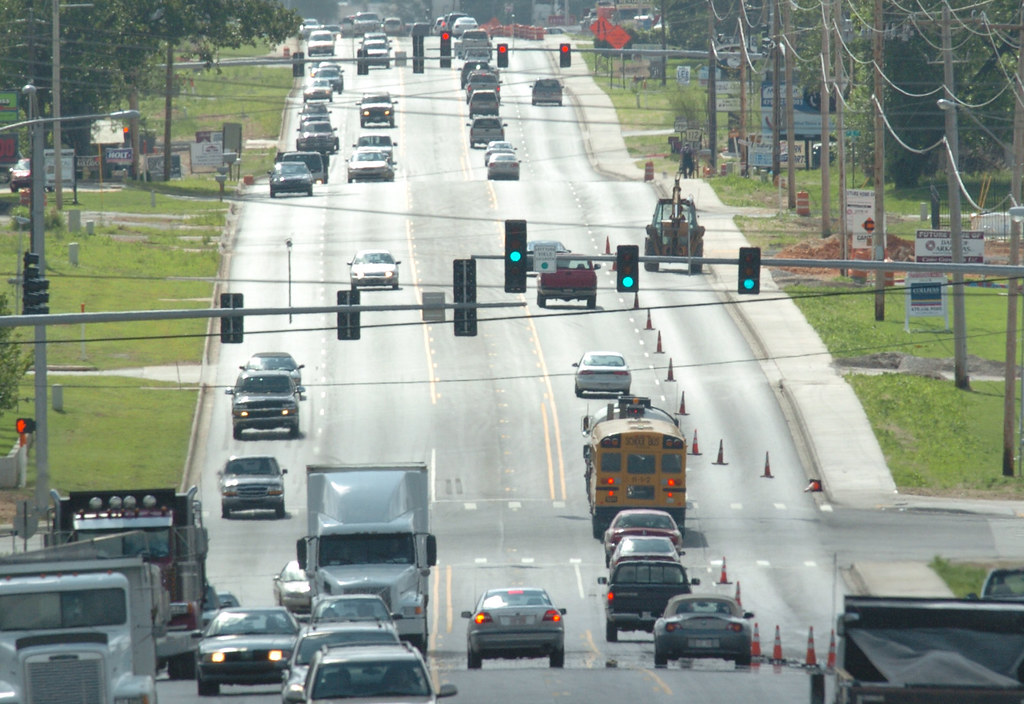
USDOT proposes to remove restrictive design guidelines that make safer streets more difficult to build

The Federal Highway Administration (FHWA) took an encouraging and surprising step, proposing to ease federally-mandated design standards on many roads, making it dramatically easier for cities and communities of all sizes to design and build complete streets that are safer for everyone.
This proposal is open for comment, and FHWA is waiting to hear from the public.
 Send a letter of support to FHWA
Send a letter of support to FHWA
These outdated federal guidelines get in the way of better street design, but FHWA is proposing to scrap many of them. This is indeed great news, but for these changes to go ahead, FHWA needs to hear that they have strong support for the proposed changes.
Join us and generate a letter to FHWA today. We’ll be delivering your letters in person to FHWA all at once before the December 7th deadline.
Currently, FHWA has a long list of design criteria that local communities and states must adhere to when building or reconstructing certain roads, unless they choose to go through an arduous process of requesting an exception to do things like line a downtown street with street trees, reduce the width of lanes to add a bike lane, or curve a street slightly to slow traffic and make it safer for people in cars and on foot.
In this new proposed rule, FHWA decided after a thorough review to scrap 11 of 13 current design criteria for certain roads because they decided these criteria have “minimal influence on the safety or operation on our urban streets” and has a stronger connection for rural roads, freeways and higher speed urban arterials.
This new freedom for local planners and engineers would cover all roads on the National Highway System (NHS) with designed speeds under 50 mph. This covers most of the non-interstate roads and highways running through communities of all sizes that are built with federal funds, like the typical four-lane state highway through town that we’re all familiar with, perhaps with a turning lane on one side. Incidentally, many of these roads are among the most unsafe for pedestrians.
In FHWA’s own words, this move will “refine the focus on criteria impact on road safety and operation” and “encourages engineered solutions rather relying on minimum, maximum, or limiting values found in design criteria.”
In our words, this move will liberate local communities that have been working hard to make their roads safer for everyone that uses them, and rid them of the need to petition FHWA for exceptions to do exactly that. It’s a win for the movement for safer and more complete streets and also a liberating change for transportation engineers, especially those that have been working hard with their planners and elected leaders to bring innovative, safer street designs to their communities.
Since these controlling design criteria were first established in 1985, any project that didn’t meet all of the minimum design standards had to receive individual approval from FHWA. This was done on a project-by-project basis and added time and difficulty for those wanting to create safer roads. Now, for these NHS roads under 50 mph, engineers will only be required to attain design variances for just two criteria – design speed and structural capacity.
Today’s proposed rule follows on the heels of FHWA’s summer release of the Bicycle and Pedestrian Funding, Design, and Environmental Review: Addressing Common Misconceptions that addresses 10 misconceptions that often prevent or slow construction of safer roads. This is a valuable resource that will help local governments, metropolitan planning organizations and civic leaders improve the safety of our roads by debunking misconceptions ranging from the pots of money available for bike and pedestrian projects to explaining that FHWA rules are not the roadblock to complete street road design.
FHWA deserves praise for their leadership on this important issue. The rule is open to public comment for 60 days through December 7, 2015. Let’s take the opportunity to provide public comment and thank FHWA for their leadership and make sure it is implemented to help make safer streets for all to enjoy.
For these proposed changes to go ahead, FHWA needs to hear that they have strong support for the proposed changes.
Generate a letter to FHWA now, and urge your friends to join in. It only takes a moment.




